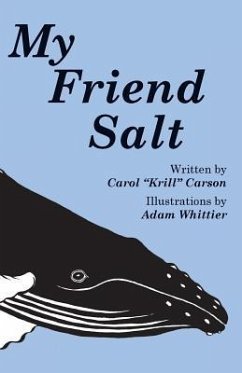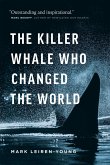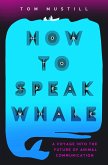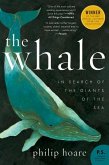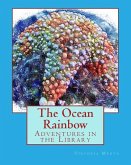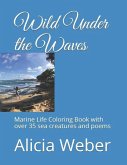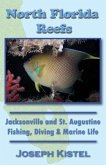This book is about Salt, the most famous humpback whale in the world. Salt is a female humpback whale that feeds in the cold, productive waters of the Gulf of Maine. In the summer, Salt is often seen feeding off Cape Cod, Massachusetts. Through the eyes of Salt, readers learn about the biology and ecology of humpback whales. They also learn about Salt and her growing family. At the close of 2014, Salt was a mother of 13 and a grandmother of 12 humpback whales. For the first time, Salt became a great grandmother when her granddaughter, Etch-A-Sketch, came back with her first calf. In 2016, Salt returned with a calf by her side making this her 14th offspring. Keeping with tradition, Captain Chad Avellar named this calf Sriracha. Also in 2016, three of Salt's daughters, Thalassa, Mostaza, and Sanchal returned with calves as did Salt's grandchild, Etch-A-Sketch. Salt now has 14 children, 15 grandchildren and 2 great-grandchildren. Humpback whales are baleen whales that filters over 1 ton of krill or small schooling fish out of the water each day. Baleen whales are large whales that do not have teeth in their mouth. Instead, they have a flexible material called baleen that grows down from the gum line of each upper jaw. Baleen is made-up of keratin, the same protein that makes-up your hair and fingernails. Humpbacks can have up to 400 baleen plates, growing down from each side of the upper jaws. The exposed hairs on the inner edge of each plate combines to create a hairy mat inside the whale's mouth. Baleen whales use their baleen to filter or strain their food out of the water. Readers also learn about Salt's life history, including her 13 calves. Salt was first seen in the early 1970's and is still be seen off Cape Cod today. Each of her calves has received a name in honor of their famous mom. By watching Salt and her offspring, scientists have learned that humpback mothers have a single calf every few years. Mom cares for the calf on her own and nurses the calf each day. The calf stays with its mother for up to a year, before it is weaned. Once it is on its own, this young animal will return to the same feeding area of its youth when a juvenile and then later when an adult. Much of the research used to study humpback whales utilizes a benign technique called photo-identification, or photo-ID. Here, natural body markings and features are photographed and used to create catalogs of known individuals. Individual humpbacks are then tracked over the course of a season as well as from one season to the next. These long-term studies are necessary to fully understand the biology and ecology of the humpback whale and to predict impacts of changing environments on the population. Readers also learn about the many hazards facing our oceans and all marine wildlife that call the ocean home. Marine hazards include, overfishing, climate change, marine debris, and collisions with vessels. Positive actions that people can take to help protect the oceans, whales, and all marine animals includes, reducing, reusing, and recycling, as well as reading about marine wildlife and participating in conservation activities like beach cleanups.
Hinweis: Dieser Artikel kann nur an eine deutsche Lieferadresse ausgeliefert werden.
Hinweis: Dieser Artikel kann nur an eine deutsche Lieferadresse ausgeliefert werden.

